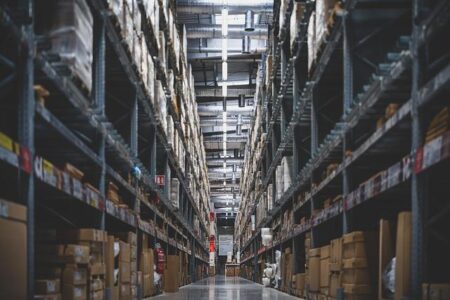The U.S. Chamber of Commerce has released its latest comprehensive report, “The State of American Business Data Center 2025,” offering a detailed analysis of the current landscape and future outlook of business data infrastructure across the nation. As digital transformation continues to accelerate, this report highlights key trends, challenges, and opportunities shaping the data center industry—a critical backbone for American businesses. From advancements in technology and sustainability efforts to regulatory impacts and economic implications, the Chamber’s findings provide valuable insights for policymakers, industry leaders, and stakeholders invested in the competitiveness of the U.S. economy in an increasingly data-driven world.
The Current Landscape of American Business Data Centers
American business data centers are rapidly evolving to meet the surging demand for cloud computing, artificial intelligence, and edge technologies. With over 3,200 facilities nationwide, data centers now span from traditional hubs in Northern Virginia and Silicon Valley to emerging markets in the Midwest and Southeast. The expansion is driven by enterprises prioritizing lower latency, enhanced security protocols, and sustainable energy solutions. Notably, the shift toward renewable energy sources such as solar and wind has gained momentum, reflecting a growing commitment to reducing the carbon footprint of critical IT infrastructure.
Investments in technology are reshaping the architecture of these centers, emphasizing hyper-converged infrastructures, advanced cooling systems, and AI-driven management tools. The competitive landscape has also intensified with stakeholders focusing on:
- Integrating 5G capabilities to enhance connectivity
- Boosting disaster resilience through geo-diverse deployments
- Expanding partnerships between private and public sectors for enhanced cybersecurity
| Key Metric | 2023 | 2025 Projection |
|---|---|---|
| Number of Data Centers | 3,200 | 3,850 |
| Renewable Energy Usage | 28% | 55% |
| Average PUE (Power Usage Effectiveness) | 1.55 | 1.35 |
Emerging Technologies Driving Data Center Innovation
The data center landscape is undergoing a transformative shift fueled by cutting-edge innovations that promise to redefine operational efficiency and scalability in the coming years. Among the forefront technologies, artificial intelligence (AI) and machine learning (ML) are revolutionizing predictive maintenance and resource allocation, enabling data centers to anticipate system failures and optimize energy consumption dynamically. Additionally, the integration of edge computing is decentralizing data processing, reducing latency, and enhancing real-time analytics capabilities critical for industries reliant on instant data insights.
Equally pivotal is the adoption of liquid cooling solutions, which address the escalating heat generation challenges from densely packed hardware, driving both sustainability and cost-efficiency. The rise of quantum computing research in data centers, while still nascent, signals a potential leap in processing speeds that could outpace traditional architectures significantly. Below is a snapshot of key emerging technologies and their primary benefits:
| Technology | Primary Advantage | Impact Area |
|---|---|---|
| AI & ML | Predictive maintenance & automation | Operational Efficiency |
| Edge Computing | Reduced latency & faster data processing | Real-time Analytics |
| Liquid Cooling | Improved sustainability & hardware longevity | Energy Efficiency |
| Quantum Computing | Exponential processing speed gains | Computational Power |
Challenges Facing U.S. Data Centers in the Next Decade
As technological demand escalates, U.S. data centers confront a complex landscape marred by rising operational costs and evolving regulatory frameworks. Energy consumption remains a critical hurdle, with facilities striving to balance increased processing power against sustainability goals. Additionally, the scarcity of skilled labor complicates efforts to maintain cutting-edge infrastructure, amplifying downtime risks and impeding rapid innovation. The fast pace of digital transformation compels centers to invest heavily in advanced cooling techniques and next-gen security protocols to protect sensitive business data from increasingly sophisticated cyber threats.
Compounding these issues, geopolitical factors and supply chain disruptions threaten equipment availability and project timelines. Industry stakeholders highlight the need to navigate:
- Regulatory compliance in data sovereignty and privacy laws
- Integration of AI and machine learning for predictive maintenance
- Transition towards hybrid and edge computing infrastructures
- Mitigation of climate-related operational risks
These challenges underscore a pivotal moment for American businesses as they strategize to future-proof their data centers against an era defined by rapid innovation and mounting uncertainty.
| Challenge | Impact | Projected Cost Impact (2025) |
|---|---|---|
| Energy Consumption | Increased operational expenses | $500M+ |
| Labor Shortage | Maintenance delays, increased downtime | $320M |
| Regulatory Compliance | Fines, infrastructural changes | $180M |
| Supply Chain Disruptions | Equipment delays, cost overruns | $250M |
Strategic Recommendations for Sustainable Growth and Security
To fortify the American business data center landscape against evolving cyber threats while promoting sustainable growth, companies must prioritize investments in energy-efficient infrastructure and embrace advanced security protocols. Integrating renewable energy sources such as solar and wind can significantly reduce operational carbon footprints, creating a resilient and eco-conscious business environment. Simultaneously, adopting a multilayered cybersecurity framework centered around zero-trust architecture ensures data integrity and mitigates risks associated with increasingly sophisticated breaches.
Collaboration between the public and private sectors is crucial to fostering innovation and resilience. Policymakers should incentivize research into cutting-edge cooling technologies and scalable cloud solutions that can adapt to fluctuating demands without compromising security. Below is a targeted framework outlining priority areas for sustained progress:
- Green Power Integration: Mandate incremental adoption benchmarks for renewable energy in data center operations.
- Cybersecurity Investment: Elevate budgets allocated to AI-driven threat detection and response mechanisms.
- Workforce Development: Expand training programs emphasizing cybersecurity expertise and sustainable engineering.
- Regulatory Harmonization: Encourage uniform national standards that streamline compliance and enhance data sovereignty.
| Focus Area | 2025 Goal | Impact |
|---|---|---|
| Renewable Energy Adoption | 50% of total power consumption | Reduce carbon emissions by 30% |
| Data Breach Response Time | Under 1 hour | Limit data exposure and loss |
| Cybersecurity Workforce Growth | Increase by 40% | Enhance operational defense |
In Conclusion
As the landscape of American business data centers continues to evolve, the findings of the U.S. Chamber of Commerce’s report underscore both the opportunities and challenges ahead for 2025. With advancements in technology driving increased demand, coupled with growing concerns around security, sustainability, and infrastructure resilience, stakeholders across industries must navigate a complex environment to maintain competitiveness. The State of American Business Data Center 2025 offers a timely and comprehensive assessment, providing policymakers, business leaders, and investors valuable insights to inform strategic decisions in the years to come.




